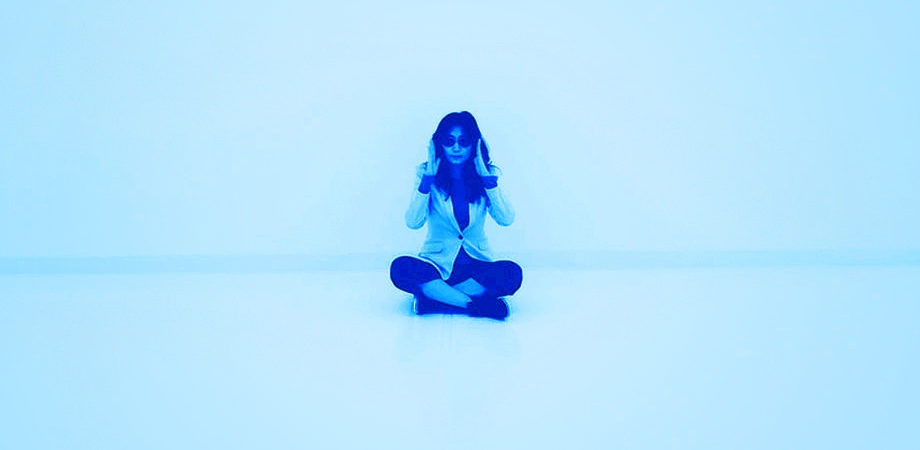“The Blue artist” self portrait of artist Anita Yan Wong, sunprint (detail)
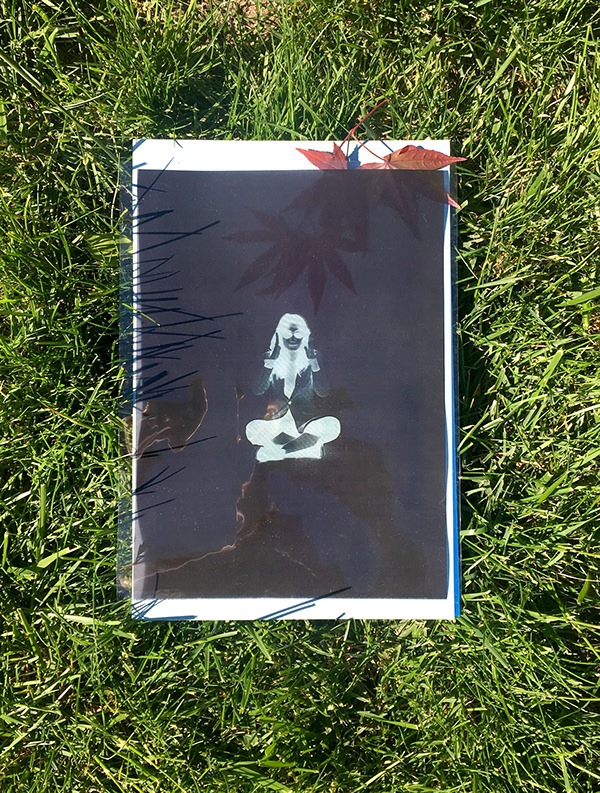
Photo negative of “The Blue artist” in the sun print developing process, 8” x 11”.
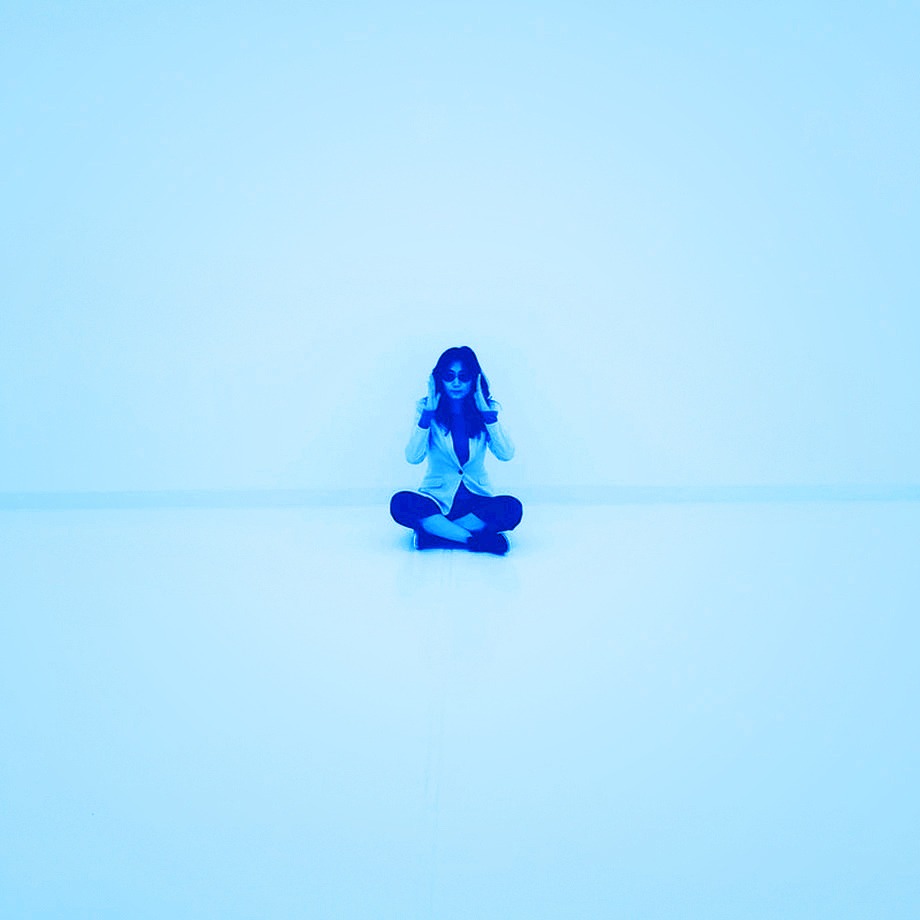
“The Blue artist” self portrait of artist Anita Yan Wong,
sunprint (detail)
When word fails, I turn to art
“There are two distinct languages. There is the verbal, which separates people… and there is the visual that is understood by everyone”
– Yaacov Agam
It has been more than a year since the pandemic emerged. New words such as “Pandemic”, “Social distancing”, “Lockdown”, “New Normal”, “Remote”, “Mask & anti-mask” have filled, consumed, and shared on podcast, phone conversation, breaking news, and every social media platform imaginable. Surrounded by these new words, I find it hard to verbally describe my personal experience in 2020 and 2021. As a person, I felt the challenge of staying informed without feeling worries and despair. When words fail during times of global crisis: human rights, climate change, and the current pandemic, we turn to art in search of meaning, strength, and hope in humanity. Art came to the rescue, and it somehow became a desperate “Need” for our society. In a crisis such as the pandemic era, many, whether artist or not, were advised to seek art as a “Tool” to heal, recover, express, communicate, and be united with others during the hard time of social isolation. When words fail, art comes to unite and rescue the human soul.

Blue bird, sunprint, 11” x 8”
Like many, it was hard for me to conclude any feelings nor experience with words this past year. I stopped writing my diary when the daily activities seemed the same and when the world came to a pause in darkness. However, my personal experience during this pandemic is captured differently through an art series titled “Blue”. First, Allow me to explain why I picked the color “Blue” and what is it about the color blue that has led me and most to associate it with a sense of sadness and despair?
The origins behind the term “feeling blue” is unknown – from the common tales of the Chasseurs Alpins, nicknamed “Les Diables Bleus,” the well known French soldiers during World War I; the idioms of the ‘Blue devil’ (low spirit); ‘Blue flag’ to the more scientific term of ‘Cyanosis’ – a blue discoloration of the skin due to a lack of oxygenation in the blood. Despite the meaning and the stories behind these blue tales, whether true or fictional, the ‘Blues’ of this pandemic has covered our world on both personal and a global level.
“Look at how a single candle can both defy and define the darkness.”
– Anne Frank
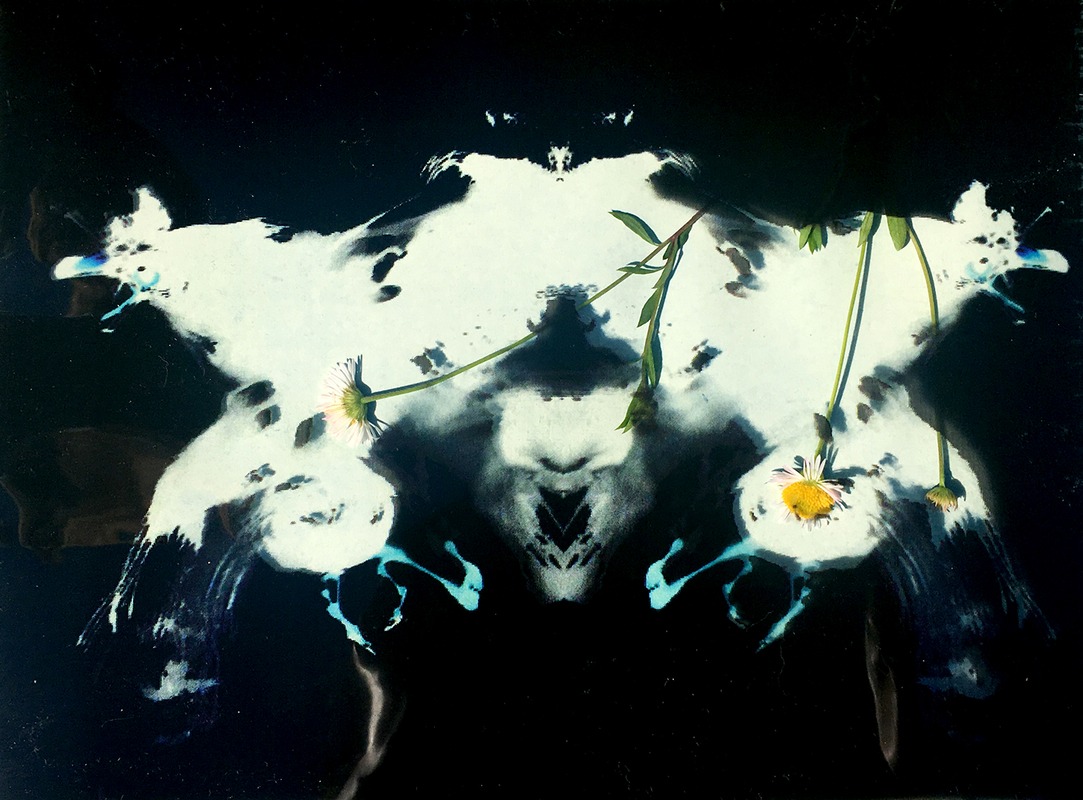
Photo negative of “The Blue birds” with pressed flowers, 11” x 8”
From the Pandemic blues during this long dreadful winter to a light shade of blue (Hope) on the horizon this spring…
Throughout history, many artists used art as a medium to influence the ones in power; color to trigger the emotions and mood of their audience, the power of art is transformative. Interestingly, our emotional reactions to colors are not just surfaced in visual art but rooted in both our biological and cultural backgrounds. And for me, Blue is the color I have felt since the outbreak. I see the color blue often in the loss and grief of close friends and our society. I see the color blue lingering in my daily routine, covering all areas – work, school, social, and economy brought to a standstill, the picture as a whole is “Blue” to me.
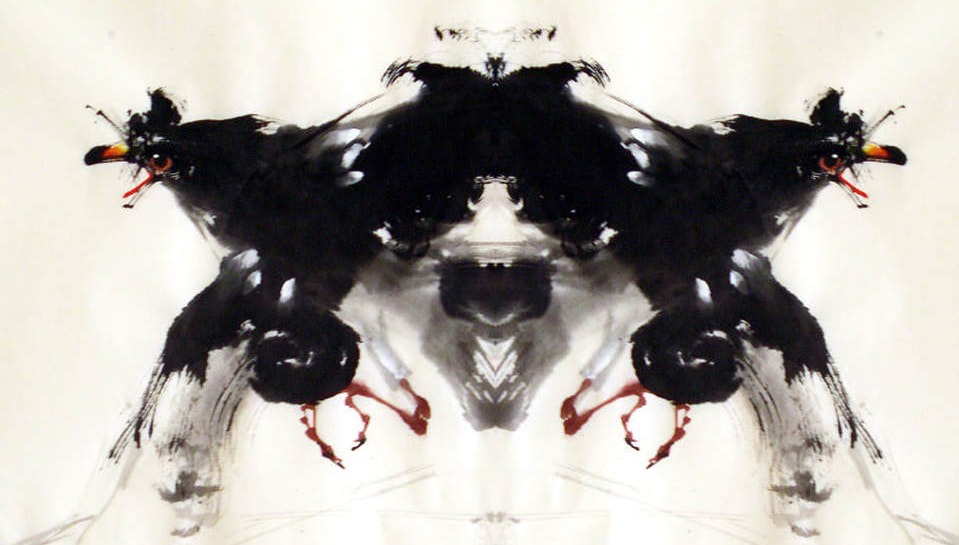
Original rice paper painting of “The two birds”, 36” x 18”
“There was never a night or a problem that could defeat sunrise or hope.”
– Bernard Williams
It is now mid-June 2021. Everyone, including myself, has long wondered when this pandemic will come to an end. Although it is hard to predict an end or define a “New Normal” with such a long period of social withdrawal, encouraging signs are on the horizon with summer approaching, and more people vaccinated. Undeniably, after what we have experienced in 2020 and 2021, It is important to grieve what was lost but equally important for one to find meaning and hope during the hard times. Like many, it is nearly impossible for me as a person to suddenly jump into joy and surround myself with the bright warm colors after such long social withdrawal and grief. I must admit that the blues are still lingering in my world. However, I am gradually able to see a different shade of blue – perhaps a lighter, brighter shade representing light and hope on our horizon.
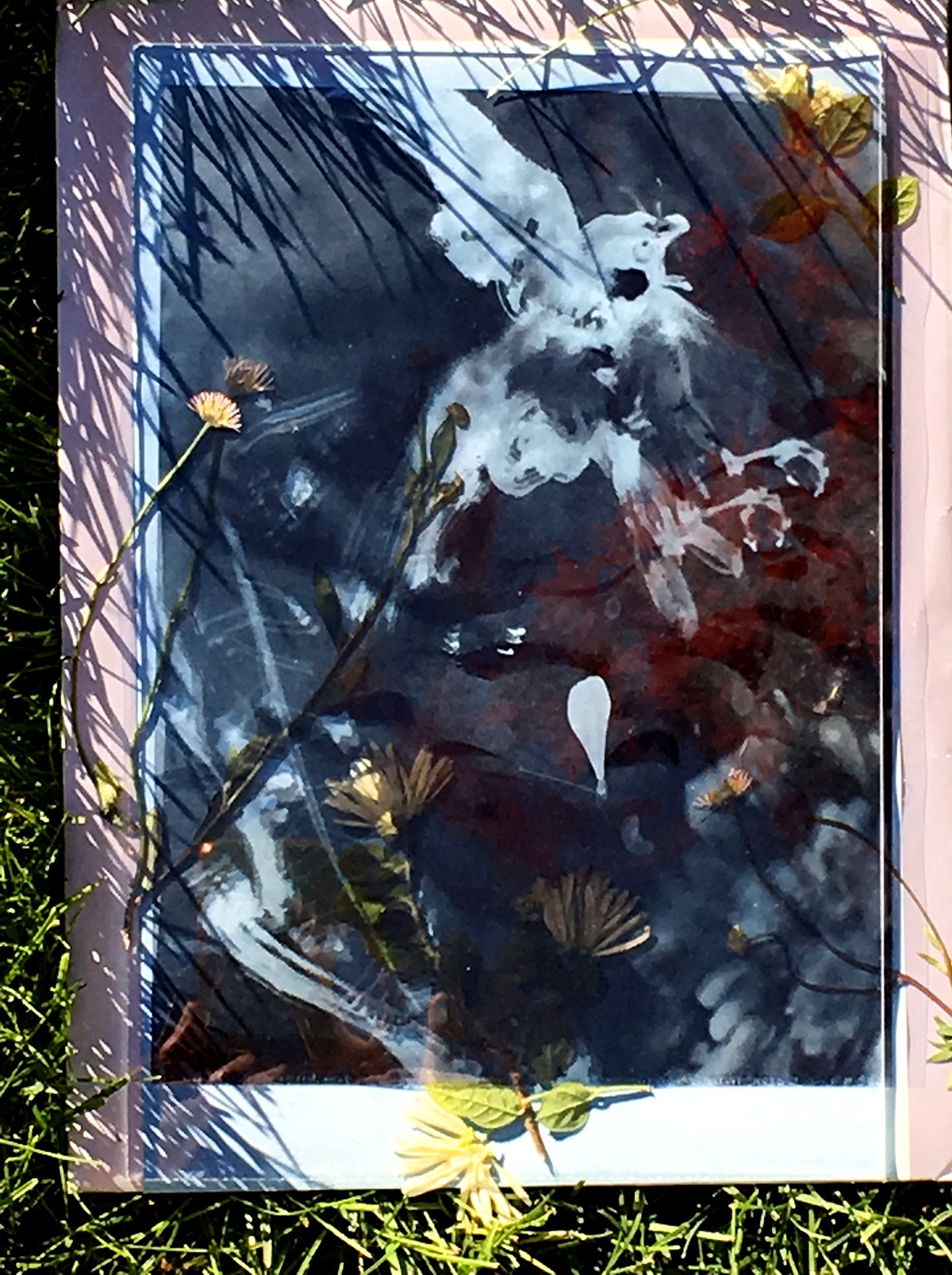
Photo negative of “The Blue birds” with pressed flowers, 8” x 11”
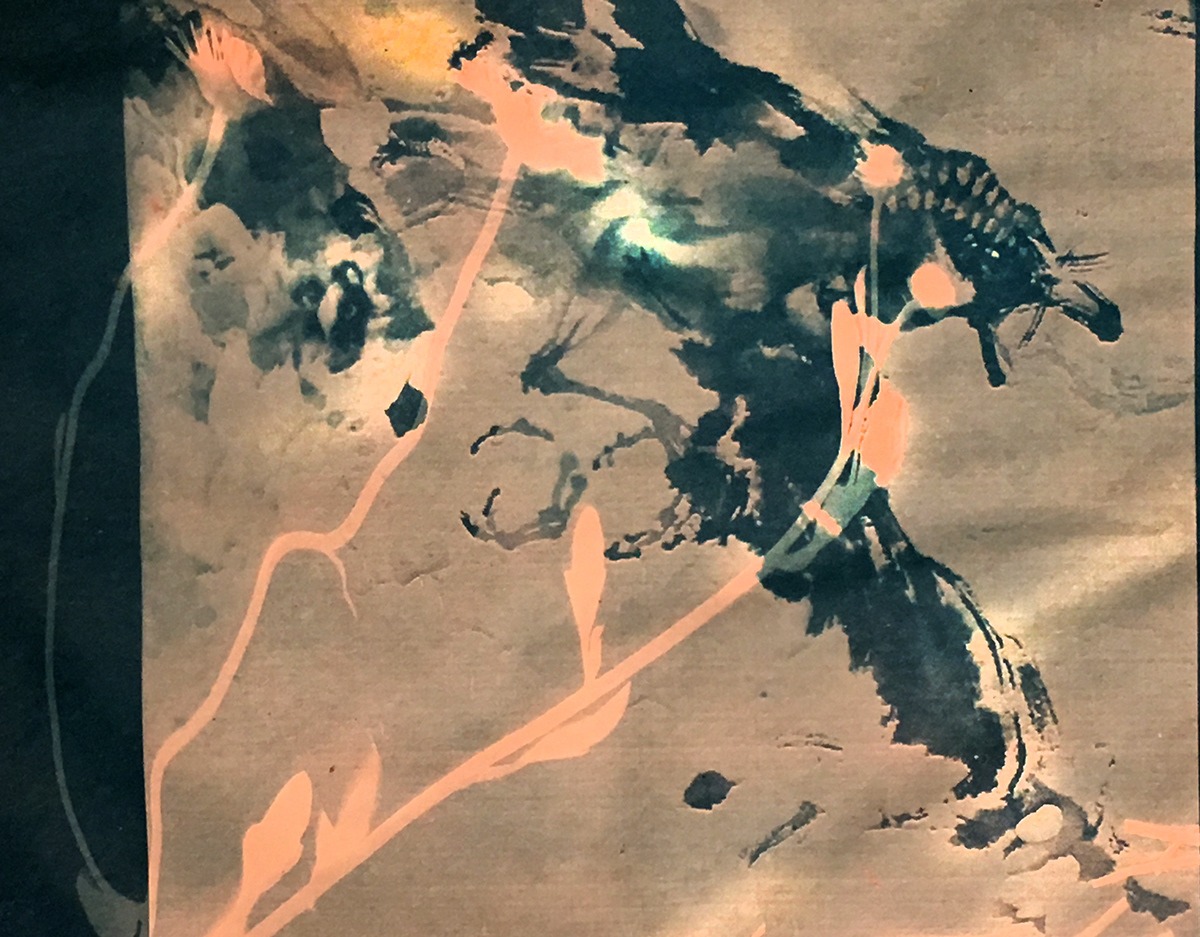
“The Blue birds”, details, sunprint ( bronze colorization,one hour into developing process)
About my art work titled – “Blue”
“Blue” is a “contemporary traditional” photography art series, a series of sun prints from my original paintings. Sun prints (AKA Cyanotype/ blue photograph) is photography without the use of a camera. Sun printing is a printing technique that uses sunlight as a developing or fixative agent. This art project itself is an “act”/ performance of the artist (me) making photo negatives of my traditional paintings (in the darkness) and bringing sunlight into the art form (hope) resulting in the creation of “Contemporary Traditional Arts” (creation). The title – “Blue” reflects my blues during the dark times of the pandemic as well as the “blues” in nature and a traditional artist’s “blues” and worries in the digital age.
In the process of sun printing, blue color naturally appears on every print during sun exposure. This interesting developing process causes color changes from white to brown and resulting in the final blueprints along with the changes of art forms (from original Chinese paintings to negatives to photographs) are captured during the act. The project is a reflection/portrait of me, an Asian American Women artist and my feelings (my blues and a sense of hope) captured on film with the sun (light) during the pandemic.
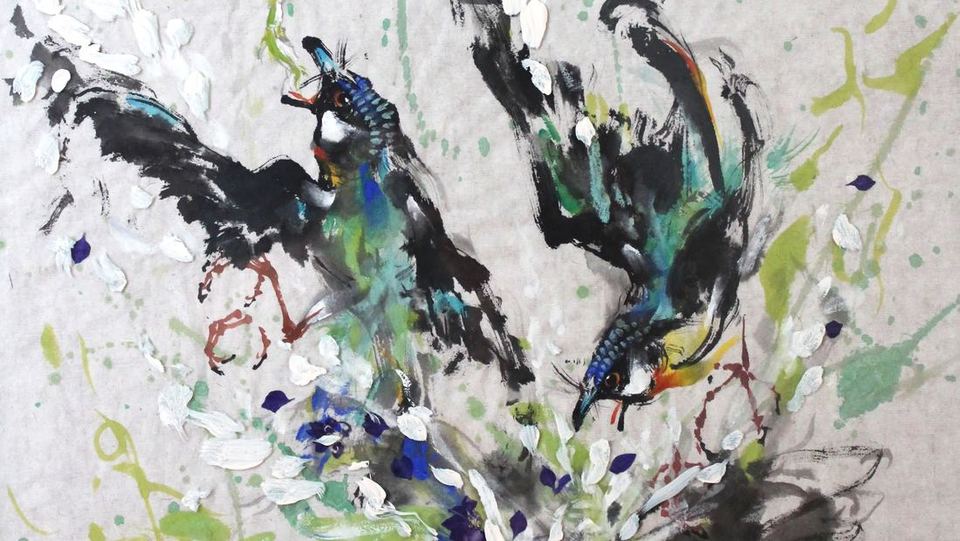
“Preserved #1”, ink and minerals on xuan paper (details), 2019
Historical background of Lingnan style Asian painting
An art form inspired by nature, “Balancing Chinese and foreign, blending ancient and modern (折衷中外、融會古今)” – the 19th-century revolutionary slogan by three founders of Lingnan School of painting: Gao Jianfu (高劍父, 1879–1951), Gao Qifeng (高奇峰, 1889–1933), and Chen Shuren (陳樹人, 1884–1948).
Lingnan style Guo Hua is an early 19th-century style of Chinese painting, from Lingnan in the Southern region of China. Its origins are a revolutionary mix of new knowledge from both Japanese painting and Western art.
Subjects & Style Nature is the main inspiration in my work. I admire both works of art by French Impressionist Claude Monet and the beautiful and expressive brush works found in Asian rice paper paintings. With my background in creating moving imagery, I often explore the movements of subjects and the passage of time with a fast-moving brush, which is why animals and natural elements represent recurrent topics in my current works. Fast brushwork in this medium allows me to bring the subject (often animals, such as cats and birds) to a full flight experience. The animals contain a certain level of abstraction but retain their natural appeal. Perception is also a recurrent topic in my paintings as an artist that tries to explore various ways individuals perceive my imagery. Inspired by Duchamp, I believe contemporary traditional paintings are not only intended to please the eye, instead they could be used as a tool to serve the mind. My goal as an artist is to preserve the beauty of nature with a new Lingnan style and to inspire generation Z to practice Contemporary Traditional Arts in the digital age.
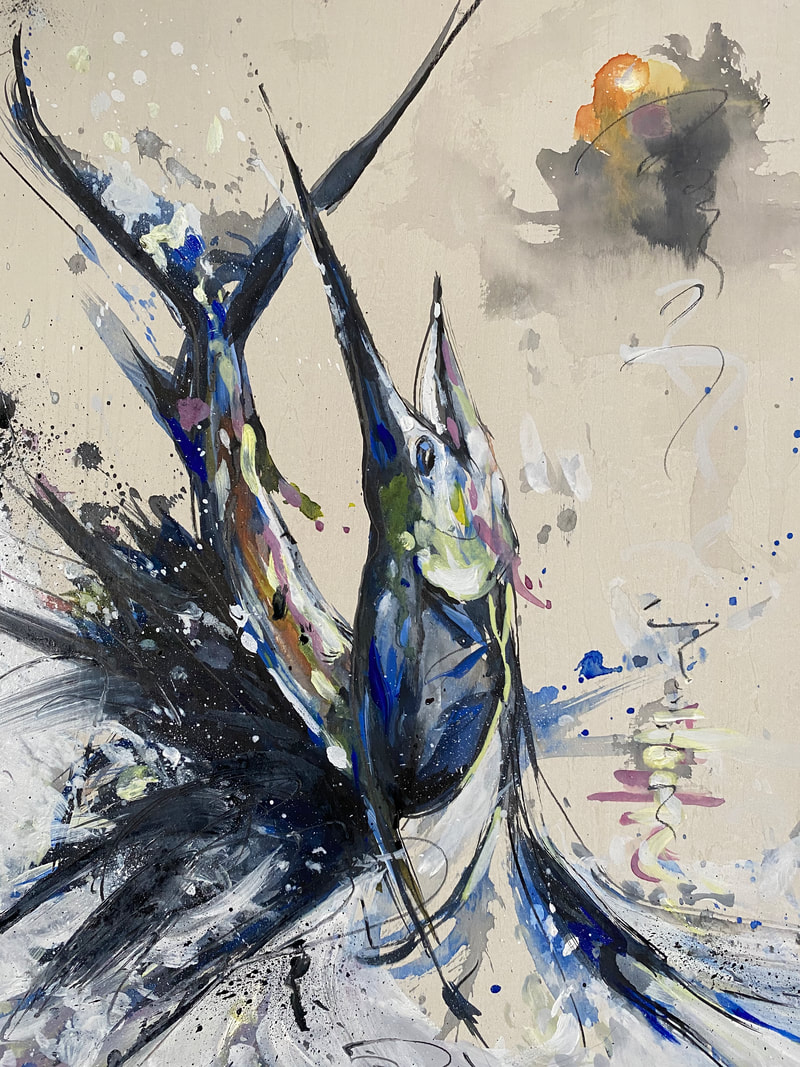
“Leap #1”, mixed media on wood, 16”x 20”, 2021
Artist reflection during the pandemic
As an artist, I create “Contemporary Traditional” Arts – traditional arts with a modern twist that speaks to the current audience. My goal as an art educator is to bring awareness and inspire more students to appreciate and practice Traditional art; my ultimate goal as a 4th generation Lingnan style painter is to move the art form forward and reach a young generation of viewers with a modern taste and creative mind. My life as a Millennial is different than the last generation of Lingnan painters – the world is becoming smaller and I like to think that the slogan by the founding fathers is no longer just a statement to inspire –. Growing up in Beijing, Hong Kong, London and the U.S.; having the opportunity to experience higher art education in both the west and east made me question if Lingnan art is behind the current state of Arts in the informational age with most Institutions and Museums lingering with the 2nd generation masters. I was lost as an artist for a long time– the new generation no longer appreciates traditional arts in the contemporary art age; the art world pushed traditional artists with art sales and many followed trends during our time and most still featuring only the leading male artists/masters of Lingnan. I have particularly thought of this – my mission/ role and goal as an Asian American Women artist during the moments of isolation in this pandemic. In my solitude, I have looked up to the founding fathers for their revolutionary innovation in art during their time and wonder why Lingnan no longer matches the current image of what is Contemporary in the Arts. I am proud to be an Asian American Women artist, I cherish the freedom of creativity that many Women artists and activists have fought for. We might be living in a world that casts blues and cries the tears of inequality but let us always remember to keep hope and be united – as light will always shine through darkness.
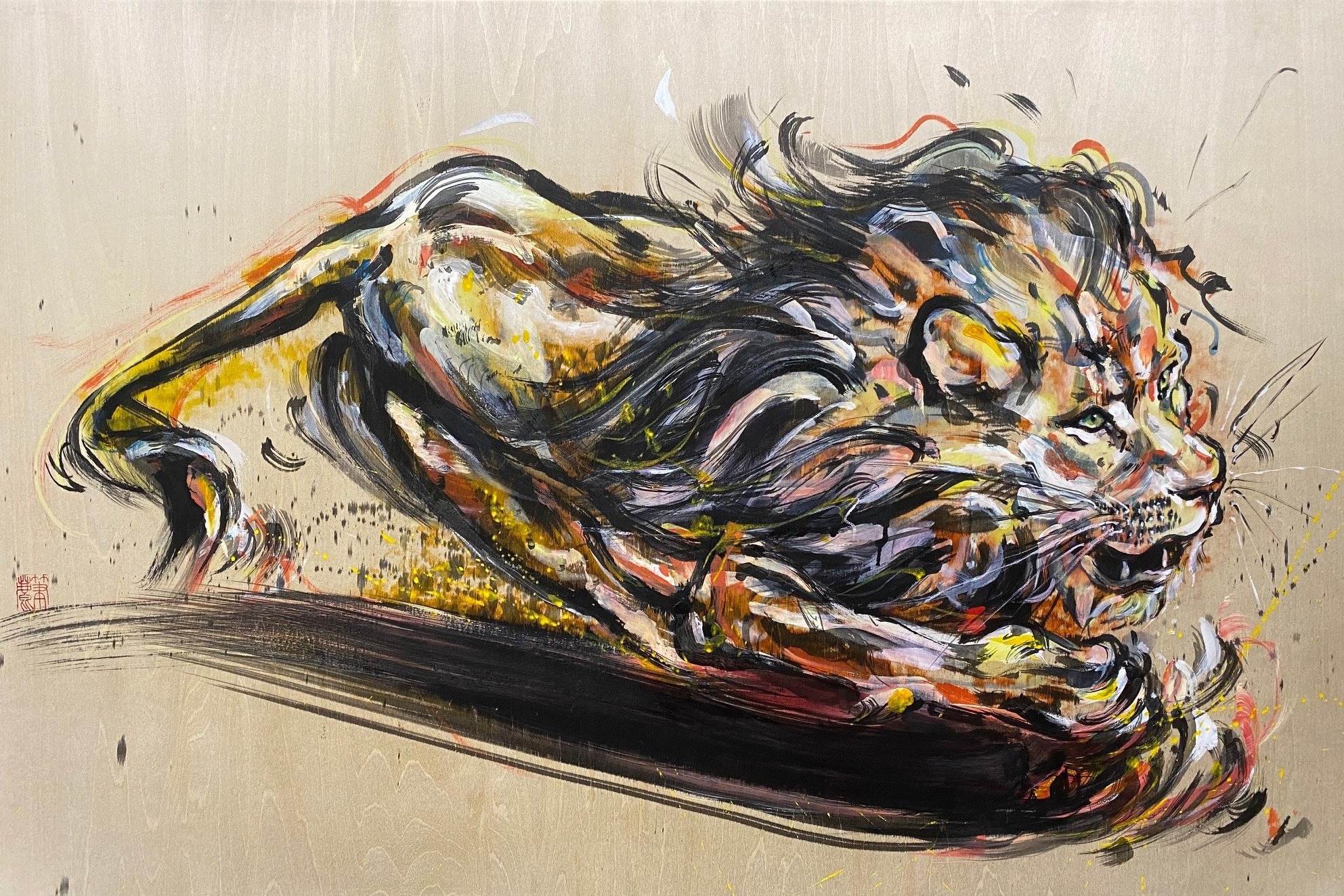
“Roar #1”, ink and minerals on wood, 36” x 24”, 2021
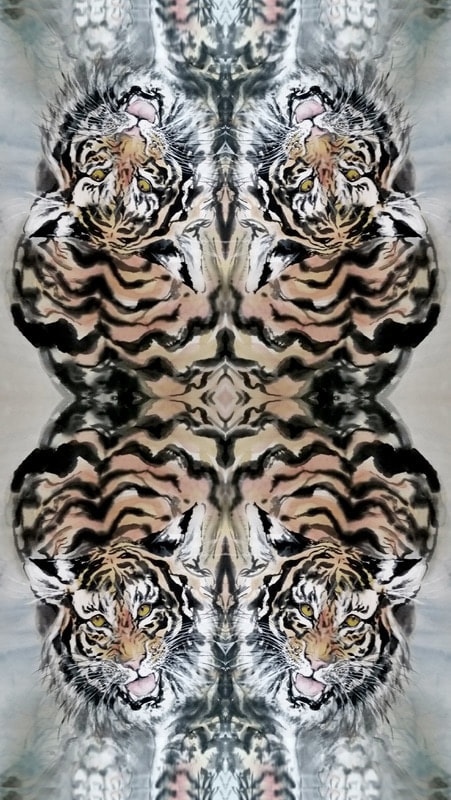
“Tiger skin”, digital art print, 36” x 24”, 2019
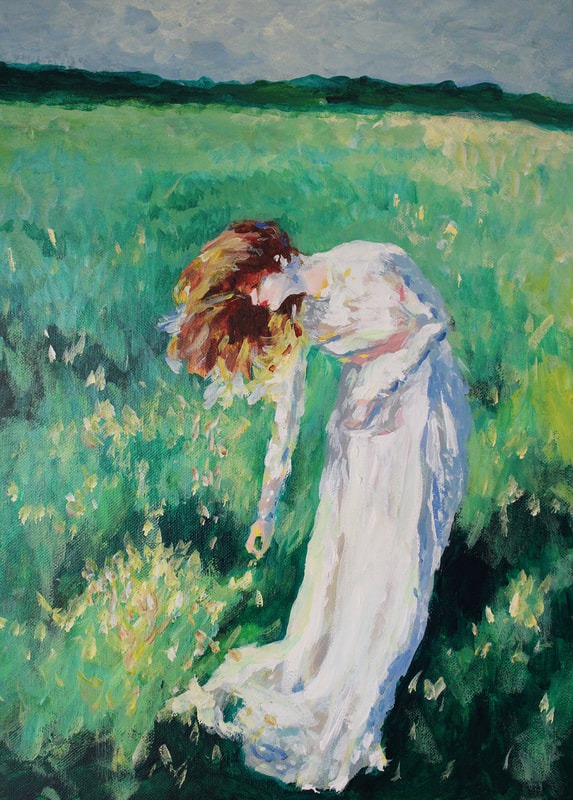
“Lady in white dress”, acrylic on canvas, 16” x 20”, 2018
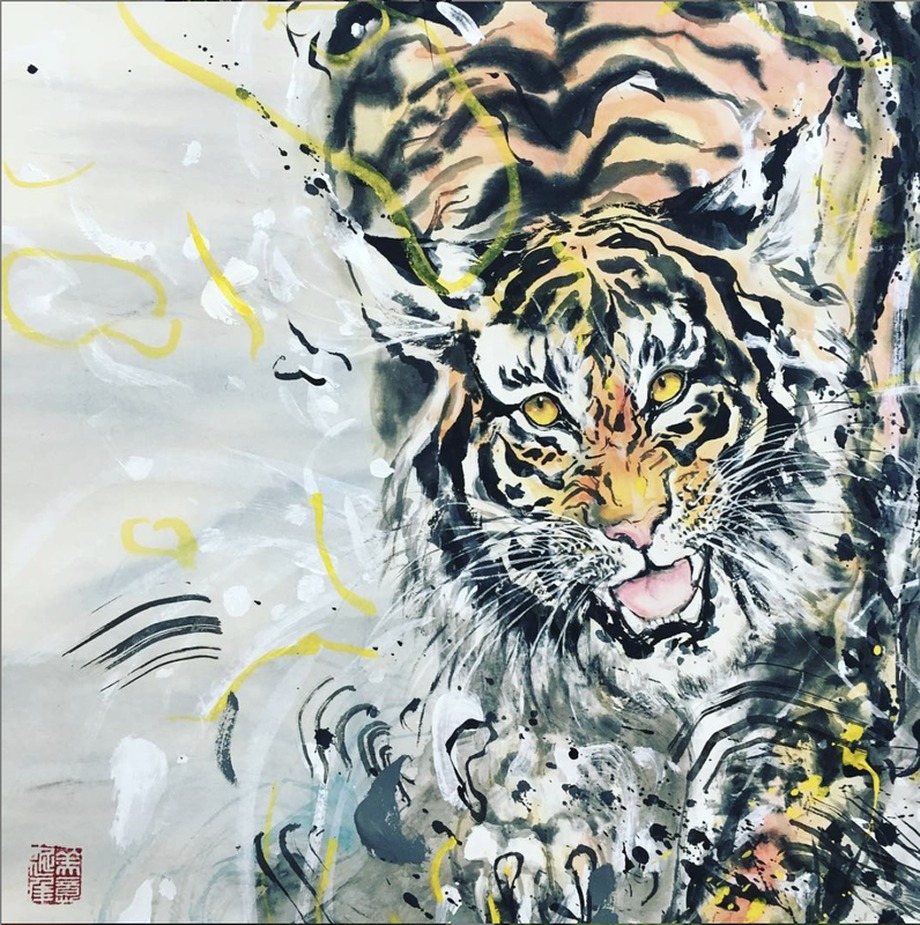
“Escape”, ink and minerals on xuan paper (details), 2018
“I would like to dedicate my life to the true essence of Lingnan –Balancing Chinese and foreign, blending ancient and modern. Not to be afraid of being judged and push Lingnan art to another level that reflects the current time, unite and inspire the viewers (both west and east) and see nature and our world with this beautiful art form.” – Anita Yan Wong
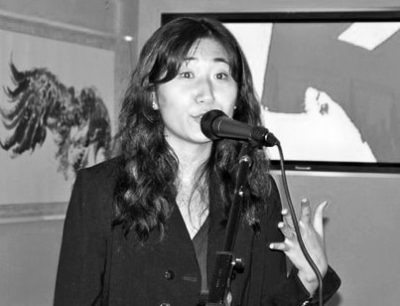 Artist Bio
Artist Bio
Anita Yan Wong, M.F.A., is an Asian American Women Artist best known for her expressive brushstrokes and unique style of “Contemporary Traditional” paintings that defies tradition and modernity. The artist, who taught at UC Berkeley S.F. extension California in recent years, is a 4th generation Lingnan painter (which originated in southern China in the late 19th century, known for the fusion of mastering modern Chinese, Japanese and Western painting approaches.). Wong worked as an art Professor for over 14 years at MICA, SVA and Temple University before returning to a sole focus on her art in 2015. Her works are currently featured Internationally on over 60 Traditional and Hip Cultural Blogs & Art Magazines including N.Y. Arts, ESPN, Disney Inc., Daily Arts Magazine, Flower Magazine, Art Dependence Magazine, My Modern Met, KTSF Channel 26 News Interview and a cover story of Works and Conversation 2017. The artist was awarded first place wall art by “Design within Reach” in Design Philadelphia Award; “Excellent Scholars” from Maryland Institute College of Art & “Teaching excellence honor” from the art Institute. Wong’s work is researched by Academics; Art historians and Ph.D. students Internationally, such as the University of Naples L’Orientale, Italy, and the Ph.D. Department of history of art and archaeology, University of London. She has collaborated with MAHB, Stanford University with the goal of preserving Lingnan Guo Hua and the beauties in nature. Yale University’s China Hands Magazine described her paintings as a “Traditional art form that questions the modern minds.”
Website: anitayanwong.com
Instagram @anitayanwong
Photo: Anita Yan Wong, Canessa Gallery, San Francisco, 2019
The MAHB Blog is a venture of the Millennium Alliance for Humanity and the Biosphere. Questions should be directed to joan@mahbonline.org
This article is part of the MAHB Arts Community‘s “Covid19 Diaries Series”. If you are an artist interested in sharing your thoughts and artwork, as it relates to the disrupted but defining period of time we live in, please contact Michele Guieu, Eco-Artist, and MAHB Arts Community coordinator: michele@mahbonline.org.
Thank you. ~

